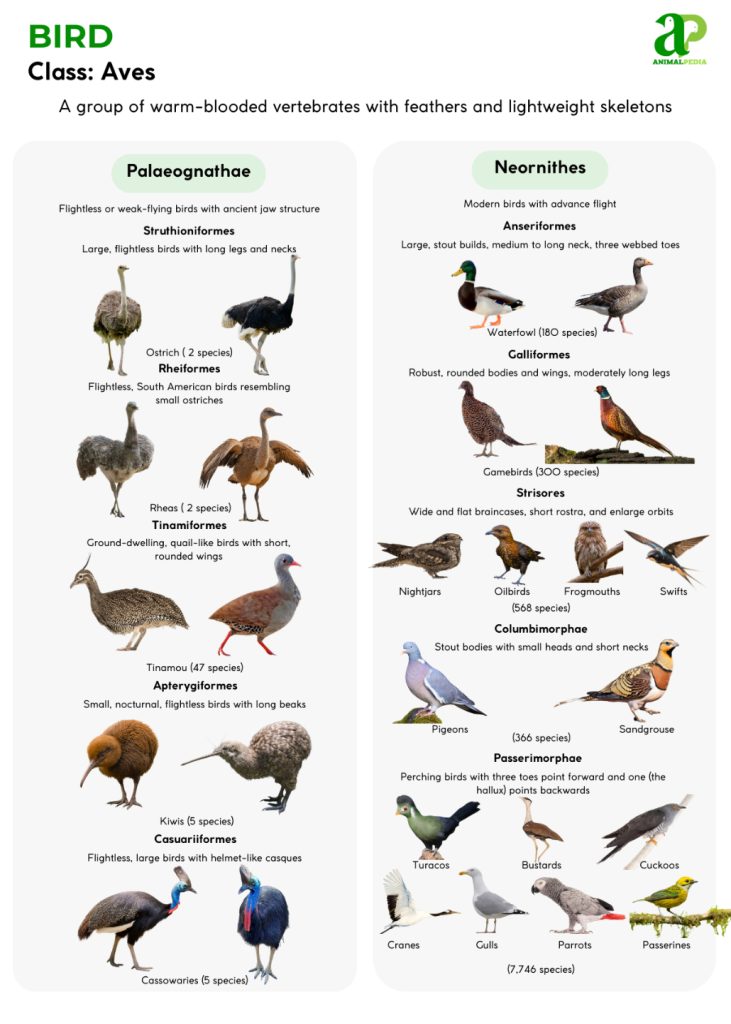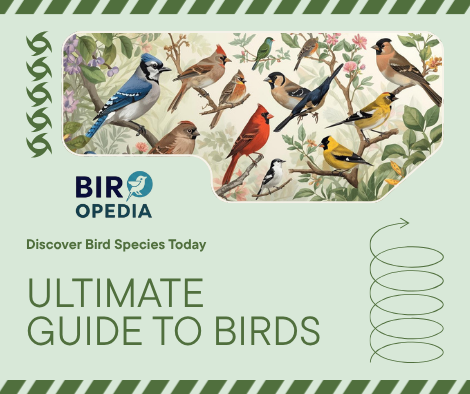Are you curious about the incredible variety of birds that share our planet? Whether you’re a beginner birdwatcher or just love nature, having a reliable bird species list can open up a whole new world for you.
Imagine being able to recognize different birds wherever you go and impress your friends with your knowledge. This guide will give you exactly that—a clear, easy-to-use list that helps you spot and identify birds with confidence. Keep reading, and you’ll discover fascinating facts and tips that make every birdwatching experience more exciting and rewarding.

Credit: www.notesfromtheroad.com
Bird Groups We See
Birds come in many types. Each type has its own features. Grouping them helps us learn their habits.
Here are some common bird groups worldwide.
Songbirds and Perching Birds
Songbirds are famous for their beautiful songs. Perching birds often sit on branches. They use their strong feet.
They have three toes forward. One toe faces backward. This helps them grip branches well.
-
Robins
-
Sparrows
-
Finches
-
Warblers
-
Thrushes
Waterfowl and Wading Birds
Waterfowl live near water. Think lakes and rivers. They have webbed feet to swim well.
Wading birds have long legs. They walk in shallow water. They hunt for food in mud and water.
-
Ducks
-
Swans
-
Herons
-
Egrets
-
Storks
Birds of Prey
Birds of prey hunt other animals. They have sharp talons and strong beaks. They use them to catch food.
They spot animals from far away. They use keen eyesight. Most hunt during the day.
-
Eagles
-
Hawks
-
Falcons
-
Owls
-
Kites
Birds That Cannot Fly
Birds that cannot fly have an odd body shape. They have strong legs. These are used for running or swimming.
Some live on land. Others swim in the ocean. These birds often live in safe spots. They have few predators.
-
Ostriches
-
Emus
-
Kiwis
-
Penguins
-
Rheas

Credit: www.wildlifenomads.com
How to Tell Birds Apart
Bird watching is great fun. Learning to name the birds makes it even better. Birds have features that help us identify them.
Knowing these features helps you spot birds. Look closely at colors, shapes, and sounds.
Colors and Feathers
Birds show many colors on their feathers. Colors help birds hide or find mates. Some birds change colors seasonally.
Plumage means the bird’s feathers. Look for spots, stripes, or color patches. These marks give good identification clues.
-
Bright colors often mean males.
-
Camouflage colors help birds hide.
-
Patterns are unique to each species.
-
Seasonal changes mean new summer feathers.
Size and Body Shape
Bird size is a key clue. Some birds are tiny. Think of sparrows. Others are huge, like eagles. Body shape also helps.
Look at the body. Check the tail length and wing shape. These parts show the bird’s main activity.
-
Small birds have short wings and tails.
-
Large birds use wide wings for floating.
-
Long tails can mean fast flight.
-
Body shape shows if it swims or walks.
Beaks and Feet
Bird beaks come in many shapes. The shape shows what the bird eats. Feet also look different for different lives.
Strong beaks crack seeds. Thin beaks catch small insects. Feet can be webbed for swimming. They can be sharp for hunting.
-
Hooked beaks help eagles tear meat.
-
Flat beaks help ducks filter food.
-
Webbed feet help water birds swim fast.
-
Strong claws help birds grip tree branches.
Bird Sounds and Songs
Bird sounds help you ID them. This is true even if you cannot see them. Calls are short sounds. Songs are long and complex.
Each bird has a special call or song. Learning common sounds helps you find birds. You can recognize them easily in nature.
-
Calls warn of danger. They keep birds together.
-
Songs attract mates. They mark a territory.
-
Some birds copy sounds from their area.
-
Careful listening improves your skills.
Birds in Different Places
Birds live worldwide. They are in many different regions. Each area has its special kinds of birds. Learning them helps us understand nature.
This list shows some common birds globally. It looks at birds in North America and other continents.
North American Birds
North America has many birds. They live in forests, deserts, and wetlands. Some birds fly south in winter. They return in spring. People often see robins in their gardens.
-
American Robin
-
Northern Cardinal
-
Bald Eagle
-
Blue Jay
-
Canada Goose
European Birds
Europe has many small and large birds. Many live near rivers and forests. The blackbird and robin are easy to find. They live in cities and parks.
-
Common Blackbird
-
European Robin
-
Great Tit
-
Mute Swan
-
White Stork
Asian Birds
Asia holds many colorful and rare birds. Some live in mountains. Others live in tropical forests. The peacock is a famous bird from Asia.
-
Indian Peafowl
-
Bengal Florican
-
Mandarin Duck
-
Oriental Magpie-Robin
-
Black-naped Oriole
African Birds
Africa has many unique birds. They are used to hot climates. Some live in deserts. Others live in rainforests. The ostrich is the largest bird there.
-
Ostrich
-
Secretary Bird
-
Superb Starling
-
Marabou Stork
Australian Birds
Australia has many birds found nowhere else. Some birds are colorful. Think of parrots. Others are known for their loud calls. The kookaburra is one example.
-
Kookaburra
-
Sulphur-crested Cockatoo
-
Emu
-
Rainbow Lorikeet
-
Superb Fairywren

Credit: animal-pedia.org
Seasonal Bird Changes
Birds change in many ways. These changes happen with the seasons. They help the birds survive and reproduce.
Seasonal changes include travel, color shifts, and new habits. Understanding these changes helps us learn more.
Travel Patterns
Many birds fly to new places. This happens when seasons change. They move to find food or better weather.
Travel routes can be short or very long. Birds use the sun, stars, and Earth’s magnetic field. This helps them find their way.
-
Some birds fly thousands of miles yearly.
-
Others only move a few hundred miles.
-
Migration timing is different for each bird.
-
Travel helps birds avoid cold winters.
Feather Changes for Breeding
Many birds grow bright feathers in spring. This is for breeding. These colors attract mates. They show good health.
Birds lose the bright feathers after breeding. Their colors become dull. This helps them hide from predators.
-
Male birds are often brighter than females.
-
Some species shed old feathers for new ones.
-
Feather changes happen at set times each year.
Seasonal Habits
Birds change their activities by season. They may sing, build nests, or store food.
Changes in habits help them survive. It also helps them raise their young. Some birds get more active in spring.
-
Birds sing more to find mates in spring.
-
They build nests and lay eggs in warm months.
-
Many birds eat more to save fat for winter.
-
Some species hide or sleep more in the cold.
Your Bird ID Tools
Bird identification requires the right tools. These tools make spotting easier. Using simple gear and good tips improves your birdwatching.
Guides and Apps
Field guides show pictures and details of birds. They help you ID birds by shape, color, and size.
Phone apps listen to bird sounds. They give fast information. They are handy in the field.
-
Guides often have range maps.
-
Apps offer photos, calls, and ID tips.
-
Both tools help beginners and experts.
Binoculars and Cameras
Binoculars let you see distant birds clearly. They are a main tool for birdwatchers.
Cameras help you take bird pictures. Photos allow you to study birds later. They record rare finds.
-
Choose binoculars that are light.
-
Use cameras with zoom for close shots.
-
Hold your gear steady for sharp images.
Simple Watching Tips
Be patient. Move quietly. This avoids scaring birds. Early mornings are the best time to watch.
Learn bird calls and habits. This helps you spot them easily. Take notes to track your progress.
-
Wear neutral colors to hide in nature.
-
Use a notebook to record bird facts.
-
Respect nature and do not bother the birds.
Rare Birds Need Help
Many bird species could soon be gone. Rare and endangered birds need protection.
These birds often live in small areas. They have very few numbers left. Learning about them helps us save their homes.
Statistic Addition:
- Global Conservation Data
According to the latest assessments by the International Union for Conservation of Nature (IUCN), more than 1,400 bird species worldwide—approximately 13% of all species—are currently listed as threatened, meaning they face a high risk of extinction in the wild.
Birds We Must Protect
Some rare birds are losing their habitats fast. Others face hunting or climate trouble.
-
California Condor – Very large. Few remain in the wild.
-
Philippine Eagle – Largest eagle. Threatened by lost forests.
-
Kakapo – A flightless parrot. Very rare and closely guarded.
-
Spoon-billed Sandpiper – Small shorebird. Numbers are dropping fast.
How We Help
People work hard to save birds. They protect habitats. They breed birds in safe places.
Education also helps. Teaching others encourages care for nature.
-
Creating safe areas where birds can live.
-
Programs to grow bird numbers safely.
-
Restoring damaged forests and wetlands.
-
Stopping the hunting and trade of rare birds.
-
Teaching the public through schools.
Build Your Own Bird List
Making a bird list helps you track sightings. It makes birdwatching fun and organized.
Your list can grow as you learn more. It helps you remember your best sightings.
Keep a Bird Journal
A journal records your daily trips. Write down the date, place, and birds you see.
Note the bird’s actions. Note any special features. This helps you identify birds later.
-
Write the bird’s name and count.
-
Record the weather and the time.
-
Describe bird sounds or calls.
-
Sketch birds or add your photos.
Photos and Records
Taking photos helps you remember details. Use a camera or phone with zoom. This gets better shots.
Record your sightings with the date and place. Good photos help with bird ID later.
-
Focus on the bird’s colors and shape.
-
Try to catch the bird’s behavior.
-
Use natural light for clear pictures.
-
Keep your camera steady to avoid blur.
Join Bird Groups
Bird groups connect you with others. They share your hobby. You can learn new tips.
Groups often organize bird walks and events. This helps you see more birds. You also make new friends.
-
Join local clubs or online groups.
-
Share photos and bird lists with others.
-
Attend guided birdwatching trips.
-
Ask questions and get advice.
Frequently Asked Questions
What are the most common bird species?
The most common birds include the House Sparrow and American Robin. They adapt well to city areas. This makes them common in many regions.
How many bird species exist worldwide?
There are about 10,000 bird species globally. This number is updated as we find new ones. They live in many different places.
Why do bird species travel?
Birds travel for food and breeding. Seasonal weather changes make them move. Travel helps them find good conditions to survive.
How do birds change for different places?
Birds adapt through physical changes. Their beaks, feathers, and feet change. This helps them find food and survive in their home.
Conclusion
Bird species show nature’s variety and beauty. Every bird has unique colors, sounds, and habits. Watching birds brings joy and peace. Learning their names helps us love wildlife more. Protecting birds means protecting our world.
Keep looking for new bird species near you. Nature’s wonders are just a step outside.

